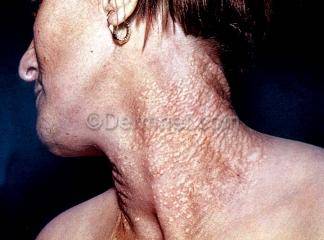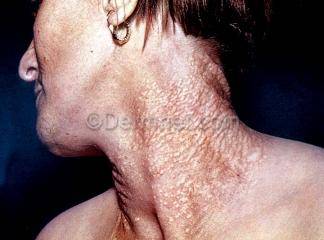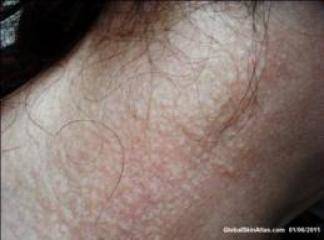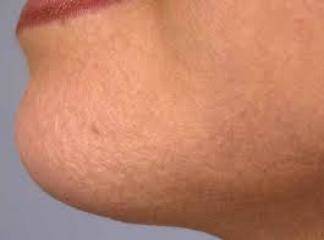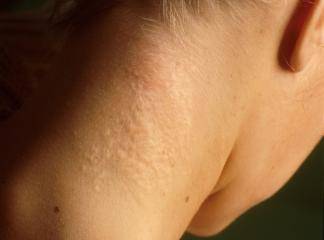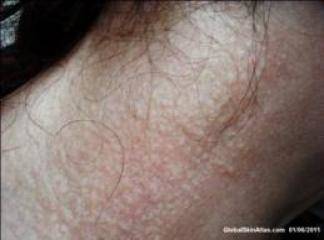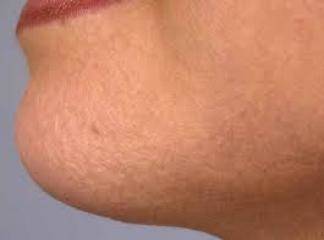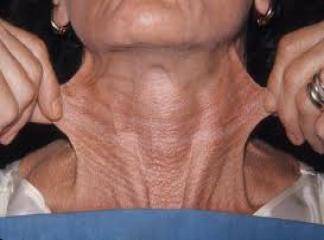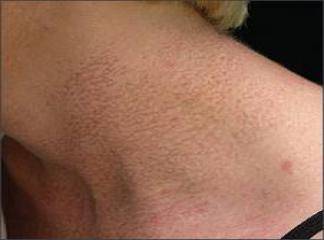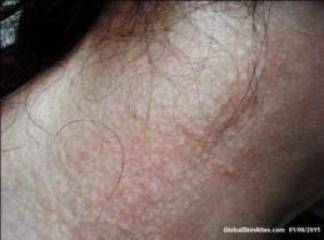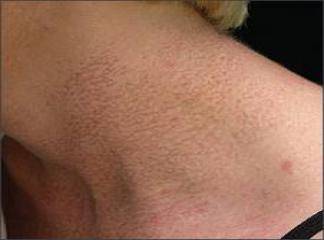
Pseudoxanthoma elasticum nedir
Usually, pseudoxanthoma elasticum affects the skin first, often in childhood but frequently later. Small, yellowish papular lesions form and cutaneous laxity mainly affects the neck, axillae (armpits), groin, and flexural creases (the inside parts of the elbows and knees). Skin may become lax and redundant. Many individuals have "oblique mental creases" (diagonal grooves of the chin).
PXE first affects the retina through a dimpling of the Bruch membrane (a thin membrane separating the blood vessel-rich layer from the pigmented layer of the retina), that is only visible during ophthalmologic examinations. This is called peau d'orange (a French term meaning that the retina resembles the skin of an orange). Eventually the mineralization of the elastic fibers in the Bruch membrane create cracks (angioid streaks) that radiate out from the optic nerve. Angioid streaks themselves do not cause distortion of vision, even if they cross into the foveal area. This symptom is present almost all PXE patients and is usually noticed a few years after the onset of cutaneous lesions. These cracks may allow small blood vessels that were originally held back by Bruch's membrane to penetrate the retina. These blood vessels sometimes leak, and it's these retinal hemorrhages that may lead to the loss of central vision. Vision loss is a major issue in many PXE patients.
PXE may affect the gastrointestinal and cardiovascular systems. In the digestive tract, the principal symptom is gastrointestinal bleeding, usually from the stomach. This occurs in very small number of patients. In the circulatory system, intermittent claudication (leg pain during walking which resolves at rest) is a prominent feature, although at later stages coronary artery disease may develop, leading to angina and myocardial infarction (heart attack) may occur.

